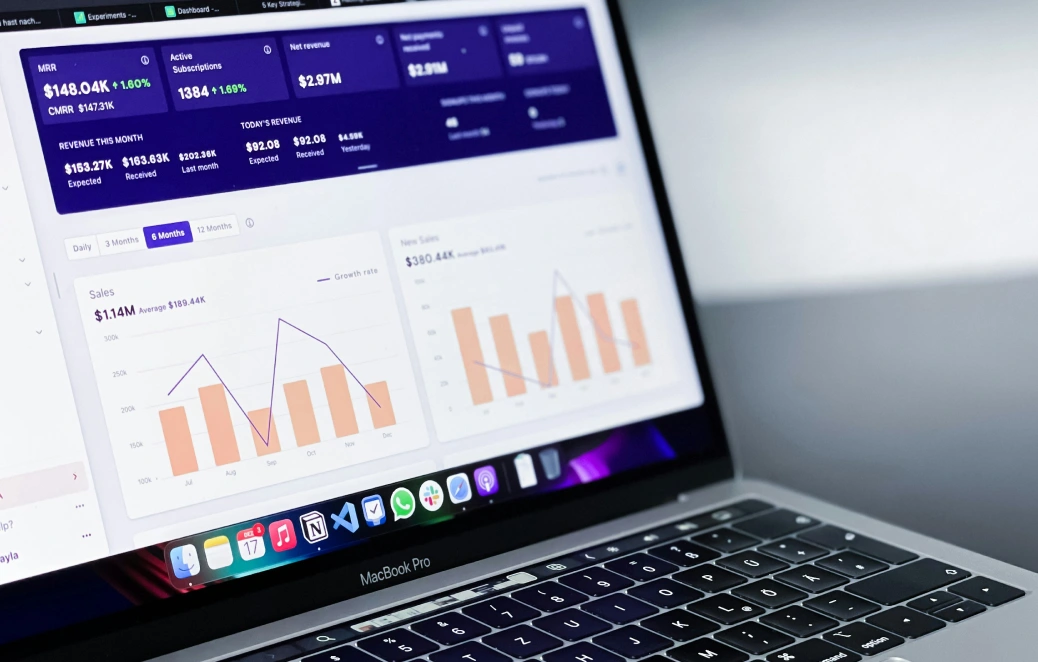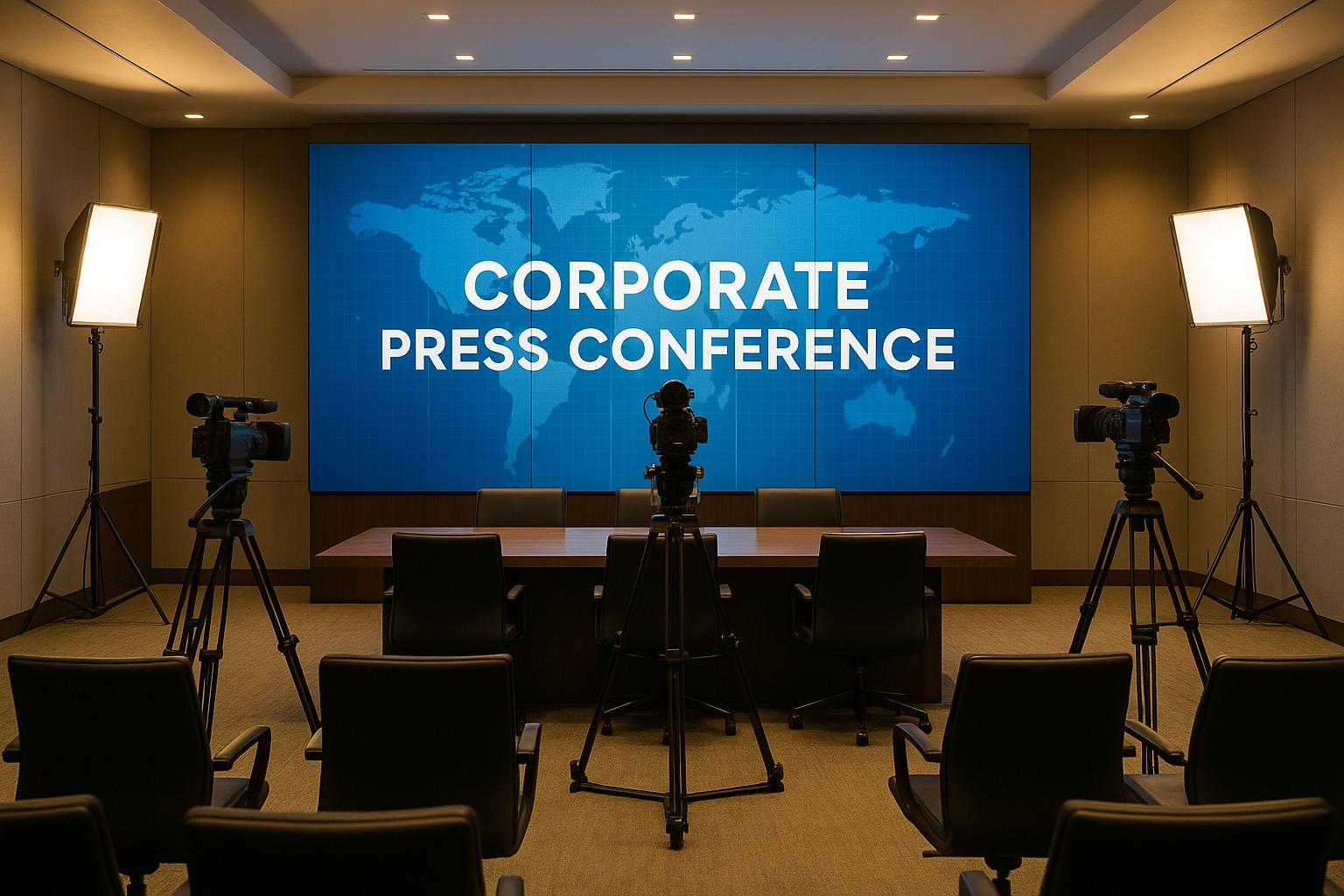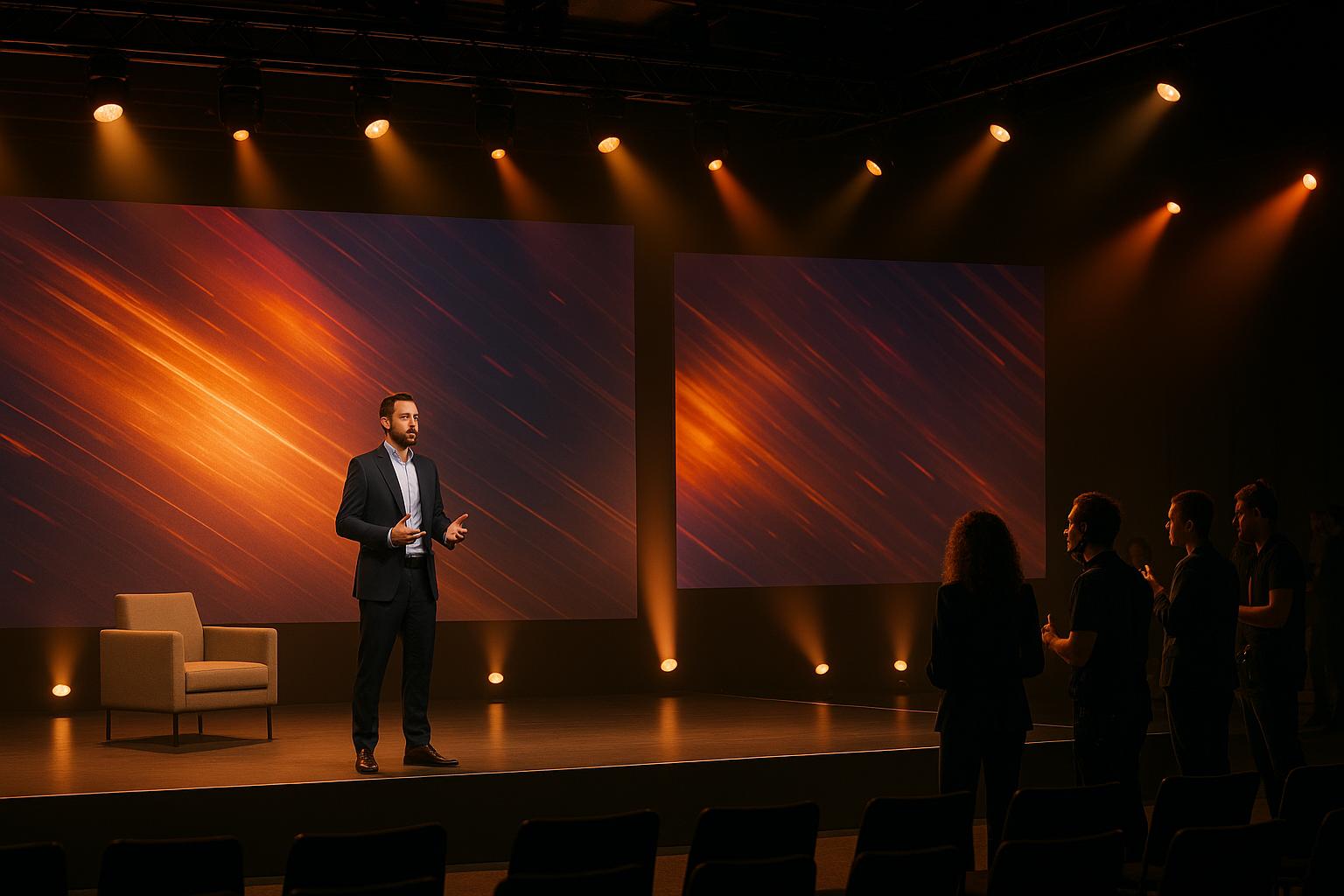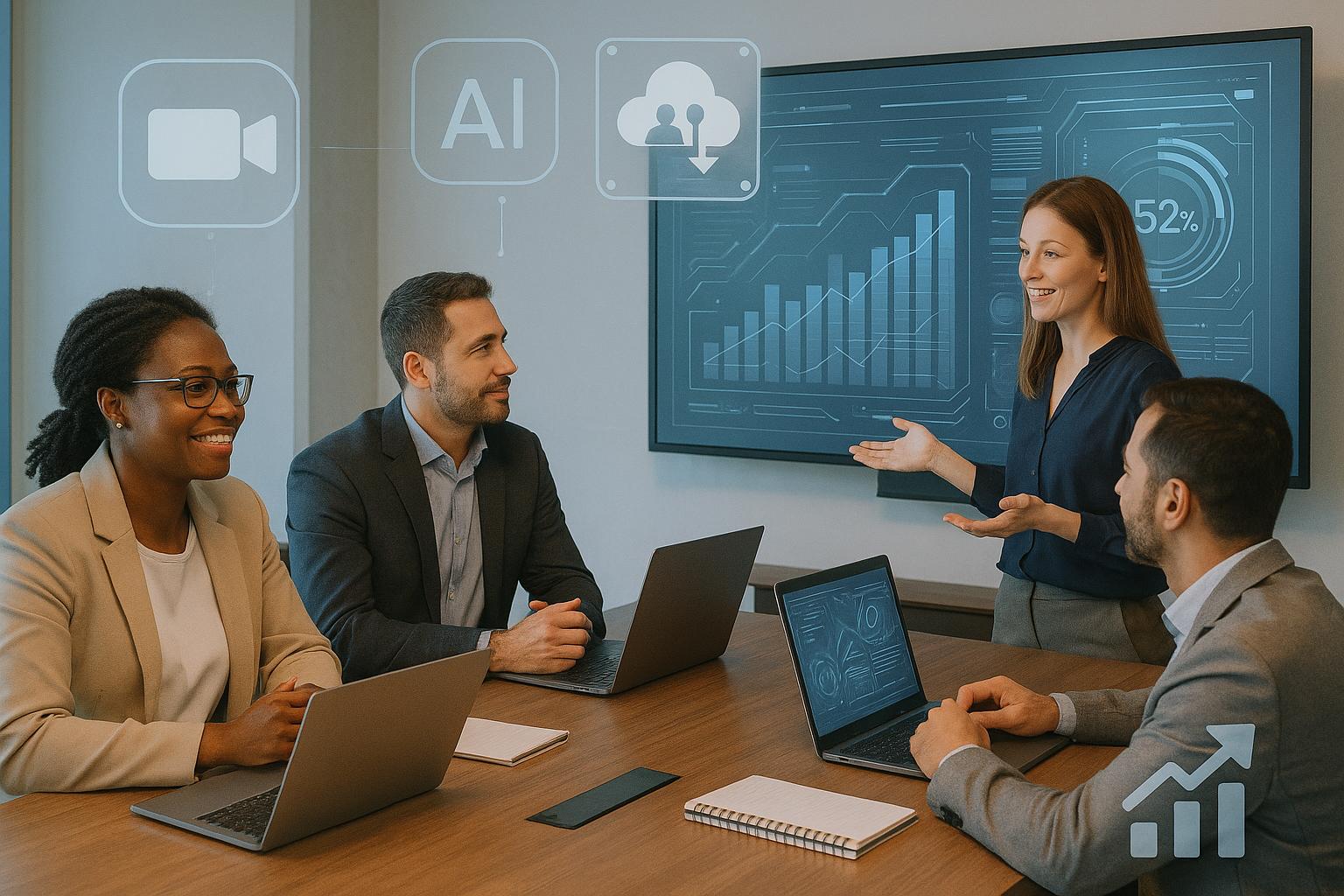Tips For Organizing A Corporate Town Hall With Professional Production

Chief Executive Officer
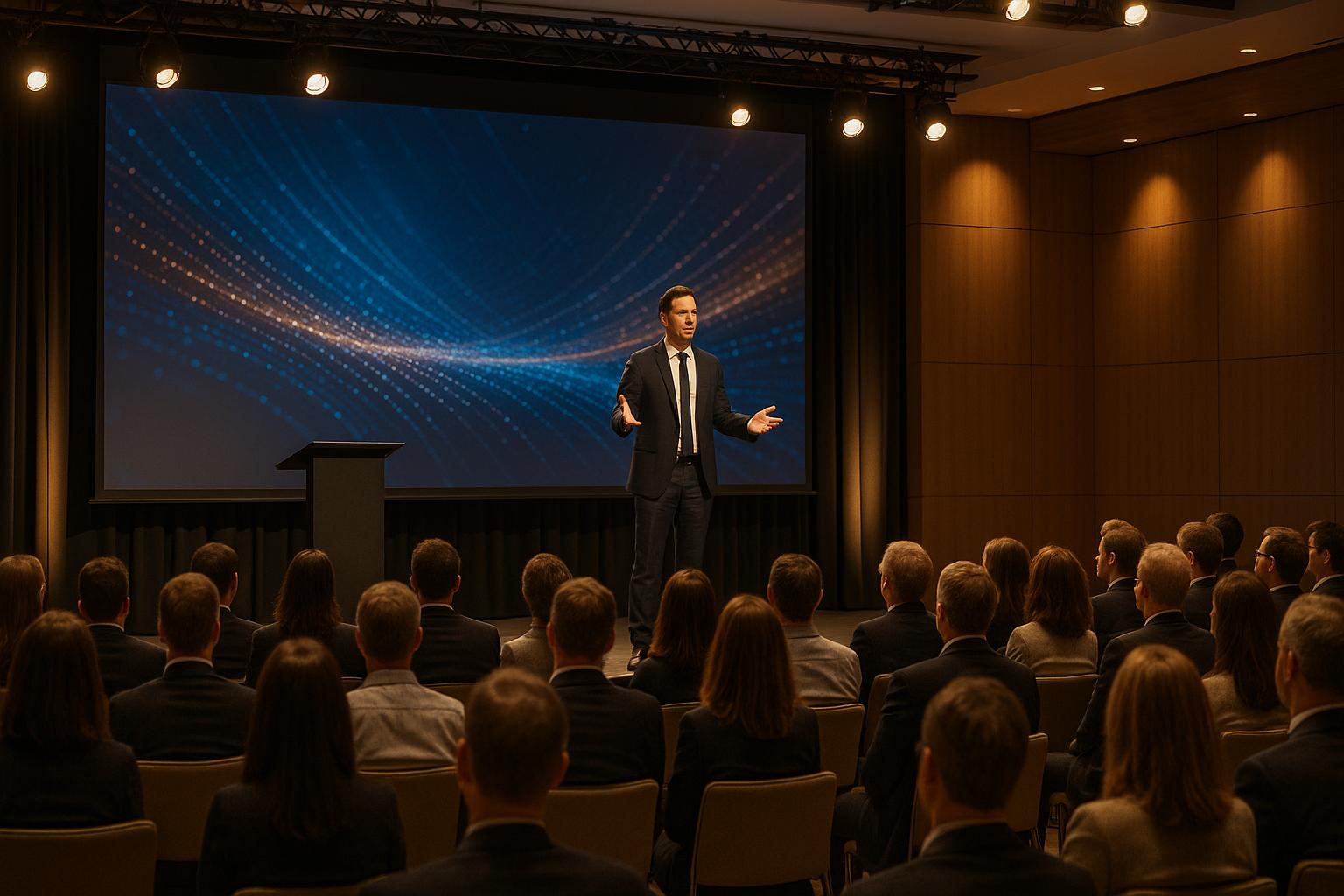
A corporate town hall is more than just a meeting - it’s a chance to connect leadership and employees while sharing key updates and addressing concerns. To make it impactful, professional audiovisual (AV) production is essential. Here’s how to plan and execute a successful town hall:
- Set Clear Goals: Define 2–3 objectives to guide the agenda (e.g., sharing updates, boosting morale).
- Plan the Agenda: Include a welcome, updates, Q&A, and a wrap-up to keep the event focused and engaging.
- Choose the Right AV Equipment: Use quality sound systems, visuals (LED walls or projectors), and lighting to ensure clear communication for both in-person and remote participants.
- Work With Experts: Partner with experienced production teams to manage technical details and ensure the event runs smoothly.
- Engage the Audience: Use tools like live polling, Q&A platforms, and interactive screens to maintain attention and encourage participation.
- Post-Event Follow-Up: Share recordings, summaries, and gather feedback to improve future events.
Pro Tip: High-quality AV production and thoughtful planning can transform your town hall into a professional, engaging experience for all attendees.
SVVS 2025: Producing the CEO Town Hall
Step 1: Set Clear Goals and Create Your Agenda
Setting clear objectives and crafting a focused agenda are the foundation of a successful and well-organized town hall. Even the most advanced AV setup won't make an impact without a clear sense of purpose and a structured plan to guide the event.
Define Your Event Goals
Start by identifying the primary purpose of your town hall. Are you sharing quarterly updates, rolling out new initiatives, addressing employee concerns, or boosting morale? The goals you set will shape everything from the tone of the presentations to the elements you include. For example, if your organization is navigating change, focus on alignment. If engagement is low, prioritize motivation. This approach matters: while 71% of executives view employee engagement as crucial to success, 85% of employees report feeling disengaged in their daily work.
To stay focused, narrow your goals down to 2–3 specific objectives. These will serve as the backbone of your agenda, ensuring every part of the event aligns with your priorities.
Create a Detailed Agenda
Once your goals are clear, translate them into a well-structured agenda. Include key elements like a warm welcome, updates on company progress, an open discussion, a Q&A session, and a concise wrap-up.
Your agenda should be efficient, engaging, and inclusive, ensuring that all participants feel involved and valued.
Step 2: Choose the Right Audiovisual Equipment
The right audiovisual equipment can make or break your town hall, impacting how well your message resonates with both in-person and remote attendees. By carefully selecting your gear, you can create a polished experience that aligns with your event's goals and ensures smooth communication.
Core AV Equipment for Town Halls
A reliable sound system is essential. Whether your presenters prefer handheld, lapel, headset, or wireless microphones, having a variety of options ensures flexibility and comfort. For audience participation, ceiling-mounted microphones with noise-reduction technology are ideal for capturing questions clearly during Q&A sessions.
To ensure everyone hears the message, position speakers strategically throughout the venue and use a controllable mixing console for balanced audio. This setup ensures that voices are clear for both on-site and remote participants, fostering an inclusive and productive environment.
When it comes to visuals, your display setup should complement the size and lighting of your venue. Projectors are a common choice for corporate settings, but their brightness (measured in lumens) must match the room's lighting conditions. For larger spaces or areas with bright lighting, LED walls provide crisp, high-resolution visuals that remain clear regardless of ambient light. Additionally, large-format displays with 4K UHD resolution and touchscreen capabilities can enhance interactivity, while confidence monitors help speakers stay focused without losing connection with the audience.
Lighting plays a crucial role in setting the tone. Proper stage lighting ensures presenters are well-lit and draws attention to key areas of focus. A lighting control system allows for seamless transitions between agenda segments, adding a professional touch to your event.
For venues with hard surfaces or challenging acoustics, installing acoustic panels can make a significant difference. These panels minimize echoes and sound distortion, ensuring every word is heard clearly, even in larger spaces.
If your town hall includes a hybrid or virtual component, invest in high-quality cameras paired with dependable HD streaming platforms. This combination helps remote attendees feel just as engaged as those attending in person.
Once you’ve established a solid AV foundation, you can enhance the experience further with interactive features.
Add Interactive Features
Interactive tools turn passive listeners into active participants, creating a more engaging experience for everyone. Features like live polling, Q&A platforms, and real-time chat encourage involvement and make the event feel dynamic, especially for remote or diverse audiences.
Wireless presentation systems and interactive whiteboards offer additional ways to foster collaboration, making it easier for attendees to share ideas without disrupting the flow of the meeting.
The secret to maximizing engagement with these tools is to integrate them early in the planning process. By doing so, you can maintain audience interest throughout the event, particularly during crucial moments like company updates or leadership announcements.
A unified control system can tie everything together, allowing you to manage visuals, audio, lighting, and even environmental factors like temperature and window blinds from a single interface. This streamlined approach not only enhances the professionalism of your town hall but also demonstrates your organization’s commitment to clear and effective communication.
Step 3: Work with Professional Production Teams
After selecting your audiovisual equipment, the next step is teaming up with experienced production professionals. These experts handle the technical intricacies of your town hall, ensuring it runs like a well-oiled machine. With their skills, your event transforms into a polished corporate experience, allowing you to focus entirely on your message and content. To make this happen, finding the right production partner is essential.
Select the Right Production Partner
Choosing the right production partner takes more than a quick search - it requires a thorough evaluation of their expertise in corporate events and their technical know-how. Look for teams with a proven track record in managing town halls. Ask for specific examples of their work, including how they handled audience sizes, resolved challenges with venues, or managed hybrid and virtual formats.
It’s also crucial that they’re familiar with your existing AV setup and can integrate any additional tools you may need, like interactive features or backup systems. Their ability to handle unforeseen technical hiccups without disrupting the event is a must.
When interviewing potential partners, pay close attention to their communication style and flexibility. Ask for a detailed cost breakdown and information on how they manage timelines or adapt to last-minute changes. Since leadership priorities can shift unexpectedly, you’ll want a team that can roll with the punches and keep things on track.
Coordinate Technical and Logistical Details
Once you’ve chosen your production partner, the focus shifts to aligning all the technical and logistical elements for a smooth event. Their role is to ensure every detail is accounted for, all while keeping your event’s goals front and center.
Production teams manage stage layouts to optimize acoustics, lighting, and audience flow. They coordinate equipment delivery, setup, and breakdown schedules, working seamlessly with vendors to prevent any logistical clashes. For hybrid events, they handle encoder settings, bandwidth needs, and platform-specific technical requirements, ensuring remote attendees have the same high-quality experience as those on-site.
Lighting design is another critical aspect. It’s not just about illuminating the stage - it’s about creating the right mood for different parts of your agenda. Whether it’s energizing lighting for opening presentations or softer tones for intimate Q&A sessions, production teams ensure the lighting complements your message. They also make sure camera lighting is consistent to avoid any visual distractions.
During the event, these professionals monitor everything in real time. From adjusting audio levels and video quality to ensuring smooth streaming performance, they handle it all without interrupting the flow. They also coordinate with speakers on microphone usage and presentation timing, ensuring a seamless experience for your audience.
Post-event, the work doesn’t stop. Production teams manage tasks like recording, editing, and distributing event content to extend its impact. They also provide detailed technical reports, helping you assess what worked and pinpoint areas for improvement in future town halls.
sbb-itb-ae35a94
Step 4: Execute Your Event Day Plan
Now that you've got a solid plan and a capable production team ready to roll, it's time to focus on bringing your event day strategy to life. Think of this as the final piece of the puzzle - where all your preparation with AV tools and production coordination comes together for a smooth and engaging experience.
Run Pre-Event Technical Tests
Before the event begins, make sure to conduct thorough technical checks. This step ensures that all your equipment and tools are functioning perfectly, minimizing the risk of any last-minute hiccups.
Assign Clear Roles to Team Members
Ensure that every member of your team knows their role and responsibilities. Clear communication and defined tasks will help everyone stay on the same page, especially during critical moments.
Start with Strong Audience Engagement
The way you kick off your town hall can set the tone for the entire event. To grab your audience's attention right from the start, consider these strategies:
- Open with a bold, impactful statement that underscores why the meeting matters. Maintain eye contact and use a confident yet approachable tone to draw people in.
- Use icebreakers to create a friendly, relaxed atmosphere.
- Share a story - whether it’s a personal anecdote or a success story - to build a connection with your audience.
- Add interactive elements like live polls, open discussions, or surveys. These not only keep the audience engaged but also make the most of your planned tech setup.
Step 5: Complete Post-Event Tasks and Review
Post-event tasks are crucial for maximizing the impact of your town hall. They allow you to extend your message, gather meaningful insights, and lay the groundwork for even better events down the road.
Share Recordings and Key Information
Aim to distribute recordings within 24–48 hours to keep the content fresh in attendees' minds. If you worked with a professional production team, they should have captured high-quality video and audio that's ready to share. Ensure the recording includes clear visuals of slides, presentations, or any interactive elements used during the event.
Prepare a follow-up package that includes the recording, key announcements, action items, and any relevant resources. This makes it easy for employees to find specific details without needing to comb through an hour-long video.
For longer recordings, break them into smaller, topic-specific clips. For instance, if your town hall covered quarterly results, policy updates, and future initiatives, create separate videos for each topic. This approach makes the content easier to consume and allows employees to focus on the sections most relevant to their roles.
Don’t forget accessibility! Include closed captions and transcripts so everyone can engage with the content. Your production partner should be able to assist with these elements as part of their post-event services.
Once the content is shared, analyze how employees engage with it. This data will help you fine-tune future events.
Analyze Engagement Metrics
Engagement data offers valuable insights into what worked, what didn’t, and how you can improve. Start by reviewing participation trends during the live event. Did engagement dip at certain points? Were there segments where Q&A activity spiked? This information helps you identify which topics resonated most and what presentation styles kept attendees interested.
If you used interactive tools like live polls, dig deeper into their performance. Look not just at the number of participants but also at how quickly they responded and whether engagement increased or dropped off as the event progressed. High participation signals that your format is effective, while lower engagement may highlight areas for improvement.
For recorded content, examine viewing patterns in the weeks following the event. Which segments are replayed most often? Where do viewers typically stop watching? These insights can guide you in refining both the content and structure of your next town hall.
Feedback collection is another essential step. Start with an immediate post-event survey to capture fresh reactions. A few weeks later, send a more detailed follow-up survey to gather deeper insights once employees have had time to reflect and apply the information to their work.
These actions complete the event cycle, reinforcing the value of your town hall and paving the way for future improvements.
Corporate Optics offers post-event analytics as part of their services, helping you understand not just how your event performed but how to make the next one even better. These insights will become the foundation for enhancing your corporate communication strategy.
Document your findings and create a reference guide to shape future town halls. Each event provides lessons that can help you refine and elevate your approach.
Conclusion: Key Points for Professional Corporate Town Halls
Hosting a successful corporate town hall requires thoughtful preparation, skilled audiovisual production, and meaningful audience interaction. By setting clear objectives and sticking to a well-structured agenda, you can ensure your event stays on track and delivers value to all participants.
The role of professional AV production cannot be overstated. High-quality visuals and sound are key to creating a seamless experience, especially for hybrid events. A skilled production team can handle the technical details, leaving you free to focus on delivering your message with confidence.
Engagement is where a town hall truly shines. Features like live polls, Q&A sessions, and multimedia presentations bring energy to the event and invite participation. Recognizing employees and sharing genuine stories further reinforces your company’s values and fosters a sense of connection. These elements transform a one-way presentation into a meaningful conversation.
But the work doesn’t stop when the event ends. Post-event follow-ups - like sharing recordings, summaries, and gathering feedback - keep the momentum going. These actions not only extend the reach of your message but also provide valuable insights to refine future town halls.
Preparation is another cornerstone of success. Rehearsals, defined roles, and backup plans help avoid hiccups and keep the focus on your message. Professional production teams are invaluable here, resolving technical issues quickly and ensuring the event runs smoothly.
Finally, every town hall is an opportunity to learn and improve. Engagement metrics, employee feedback, and post-event analysis offer a wealth of information to enhance your communication strategy. With careful planning, expert support, and a commitment to growth, your town halls can evolve into powerful tools for building company culture and driving organizational success.
FAQs
What should I look for when choosing a production partner for a corporate town hall?
When choosing a production partner for your corporate town hall, prioritize their experience with similar events and their ability to provide high-quality audiovisual production that aligns with your goals. Assess their technical skills, dependability, and how effectively they can work alongside your team to ensure everything runs smoothly.
Review their portfolio to see examples of previous projects, and don’t hesitate to request client references to gauge their performance. An ideal partner will not only manage the technical details but also elevate audience engagement with well-planned production and seamless execution.
How do live polling and Q&A tools make corporate town halls more engaging?
Interactive tools, such as live polling and Q&A platforms, can breathe new life into corporate town halls, turning them into experiences that truly engage and involve everyone. These tools give attendees the chance to actively participate - whether it’s by asking questions, sharing feedback, or voting on topics - all in real time. The result? A more attentive audience that feels genuinely heard and appreciated.
For organizers, these tools are equally valuable. They offer immediate insights into what the audience is thinking and concerned about, allowing for quick responses and adjustments to the discussion. By weaving these interactive elements into the event, you create a more dynamic atmosphere that connects with participants on a deeper level.
How can we ensure a smooth experience for both in-person and remote participants during a hybrid town hall?
To make a hybrid town hall run smoothly for both in-person and remote participants, start with investing in reliable audiovisual equipment. Clear sound and visuals are essential for effective communication. Choose platforms that offer interactive features like live Q&A sessions or polls to keep everyone actively engaged.
Schedule rehearsals before the event to test all the technology and address any potential hiccups. Create content that resonates with both audiences, ensuring it’s inclusive and engaging. It’s also a good idea to have a dedicated team on hand to manage live interactions and handle any technical issues that arise. With thoughtful planning and clear communication, you can ensure everyone feels connected and valued, no matter where they are.
Related Blog Posts
